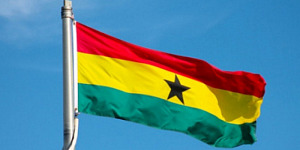Fitch Ratings has assigned Ghana's (B/Stable) proposed senior unsecured foreign-currency bonds a 'B' rating.
KEY RATING DRIVERS
The rating is in line with Ghana's Long-Term Foreign-Currency Issuer Default Rating (IDR).
Fitch affirmed Ghana's Long-Term Foreign- and Local-Currency IDRs at 'B' with a Stable Outlook on 15 October 2020.
RATING SENSITIVITIES
The bond's rating is sensitive to changes in Ghana's Long-Term Foreign-Currency IDR.
The following are the rating sensitives for the sovereign rating published in the rating action commentary on 15 October 2020.
The main factors that could, individually or collectively, lead to positive rating action/upgrade are:
- Public Finances: Greater confidence in the government's ability to move public debt/GDP onto a downward path, for example, through the implementation of a credible post-pandemic fiscal consolidation strategy.
- External Finances: An improvement in Ghana's external liquidity, such as an increase in international reserves occurring through non-debt-creating flows.
The main factors that could, individually or collectively, lead to negative rating action/downgrade:
- Public Finances: Expectations of a persistent rise in the medium-term public debt trajectory resulting, for example, from a lack of a credible consolidation strategy following the 2020 election.
- External Finances: A decline in international reserves, for example, as a result of a prolonged lack of access to international capital markets.
- Macro: A deeper near-term macroeconomic shock or a sustained increase in macroeconomic instability, for example, due to subsequent waves of pandemic-related measures and/or prolonged fiscal slippage.
BEST/WORST CASE RATING SCENARIO
International scale credit ratings of Sovereigns, Public Finance and Infrastructure issuers have a best-case rating upgrade scenario (defined as the 99th percentile of rating transitions, measured in a positive direction) of three notches over a three-year rating horizon; and a worst-case rating downgrade scenario (defined as the 99th percentile of rating transitions, measured in a negative direction) of three notches over three years. The complete span of best- and worst-case scenario credit ratings for all rating categories ranges from 'AAA' to 'D'. Best- and worst-case scenario credit ratings are based on historical performance. For more information about the methodology used to determine sector-specific best- and worst-case scenario credit ratings, visit [https://www.fitchratings.com/site/re/10111579].







































